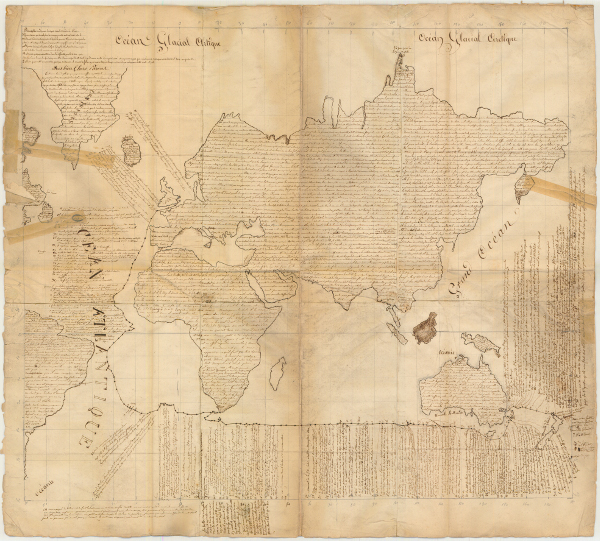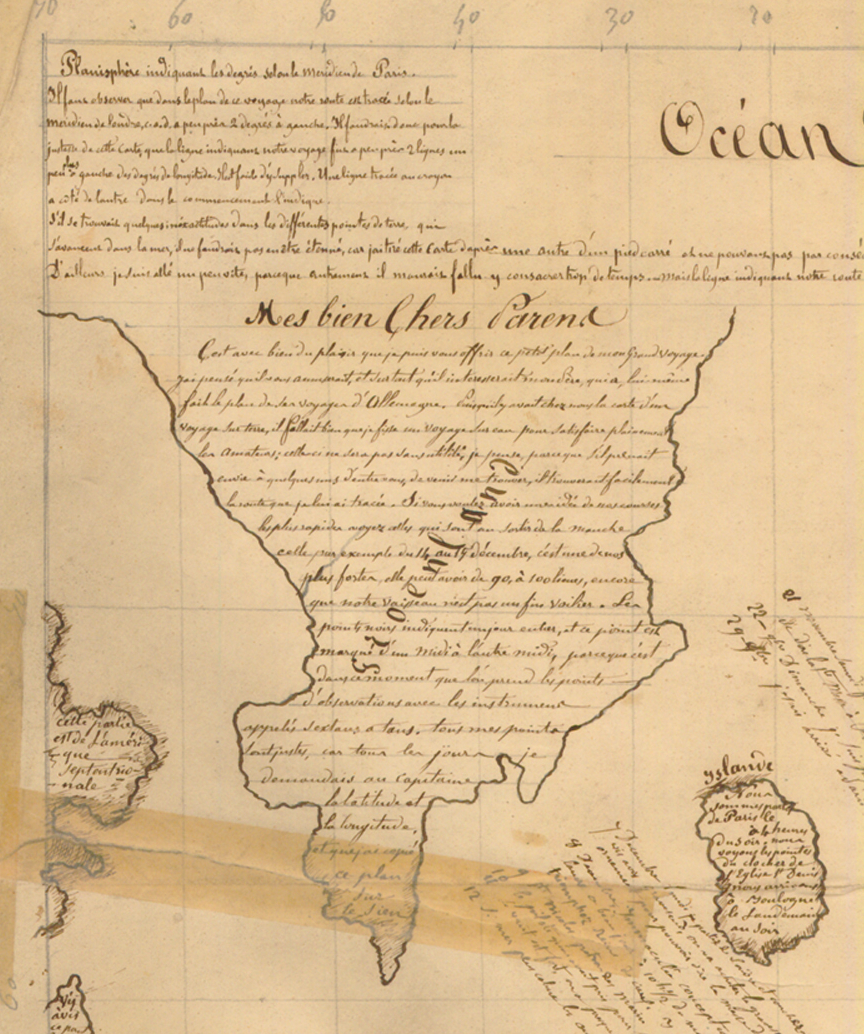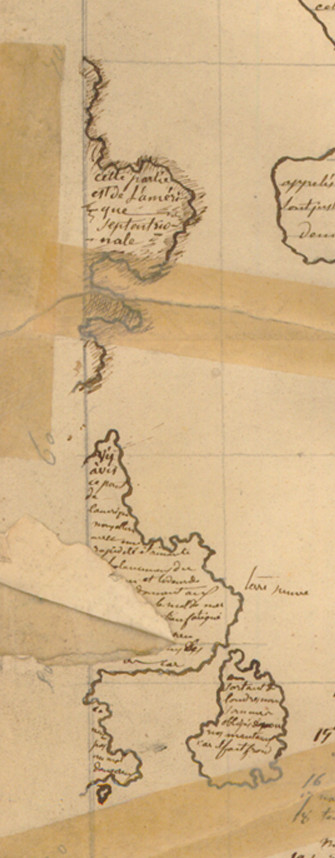Difference between revisions of "GarinMap"
From Marist Studies
| Line 46: | Line 46: | ||
[[Image:Garin_map_letter_South_America.jpg|left]] | [[Image:Garin_map_letter_South_America.jpg|left]] | ||
| + | |||
| + | |||
| + | |||
| + | |||
| + | |||
| + | |||
| + | |||
| + | |||
| + | |||
Revision as of 11:18, 30 December 2016
Father Antoine Garin. Map of the World, 1840-1, Letter to his parents
Translated by Fr Brian Quin SM. (Not all the annotations are included in this translation)
- [Greenland]
- Planisphere indicating the degrees according to the Paris meridian. It must be realized on the map of the voyage the route we took is drawn according to the London meridian, i.e. about 2 degrees to the left. So for the map to be correct, the line showing our route would have to be 2 lines further left of the degrees of longitude. It’s easy enough to make the adjustment. A pencil line next to the other one at the beginning shows where it should go.
- If there are some inaccuracies in the different promontories that extend into the sea, don't be surprised, as I draw this map from another that was only one foot square and so I couldn’t depict these precisely. And I did draw if fairly quickly, because otherwise I’d have had to spend too much time on it. But the line indicating our route is accurate.
- My dearest parents
- It's a great pleasure to me to send you this little map of my big trip. I thought you would like it and that my father would be particularly interested in it, as he did a map of where he went in Germany. Because we had a map at our place of a land journey, I had to make a sea voyage if I was to please the connoisseurs. This map could even be useful, in my opinion, as, if any of you wanted to come and find me, they could easily follow the route I've shown. If you want to have an idea of the fastest sections of our voyage, look at the ones as we were leaving the English Channel, the one for the 14 to 15th December, for example. It is one of our best, around 90 or 100 leagues, even though our ship is no fast clipper. The little black circles mark off the days. They go from midday to midday, because that is when our position is established with instruments called T-sextants. All these are correctly positioned as I asked the captain our latitude and longitude every day and I copied my map from his.
- [Iceland]
- We left Paris on the [blank] at 4.p.m. We saw the tops of the steeple of the St Denis church. We arrived at Boulogne the evening of the following day.
- [Newfoundland]
- Leaving London, we had to put our coats on as it was cold.
- [North America]
- This is part of North America
- At the latitude of this part of America we sailed with amazing speed. The rolling of the ship and the smell of the sea made the passengers seasick. Some were feeling extremely weak, others only slightly. We had a good laugh at each other as it wasn’t anything serious.
- [South America]
- When the sun is above one of the tropics, there are usually storms at the other, but we had none at either tropic. Below the Equator and at 4 degrees north, you are nearly always sure of not having much wind until you get to the other side. And, sure enough, we experienced this a little beneath the 4th degree, but there is a light breeze from time to time to refresh the air, so the heat is not as bad as it could be. Below the Equator we sail towards America, because from the Cape to the Equator along the coasts of Africa, the trade winds prevail and they are steady but against us. So to avoid them we have been obliged to sail near America. And when we get near Rio de Janeiro, if the winds prevent us heading for the Cape, we will call in for fresh water in America. It would only take a day. But the winds have become more favourable at 16 degrees south and so we won’t go to Rio and we will call in at the Cape instead. During this part of the trip we have enjoyed a clear blue sky and very pleasant sailing. The winds are not too strong, we often see wonderful rainbows as the sky is hardly ever totally overcast. The rain is only local and comes from thick clouds. I’ve seen rainbows come right down to my feet on the hip, to the right and left of me. This happens when it rains right where you are and the sun is behind you.



